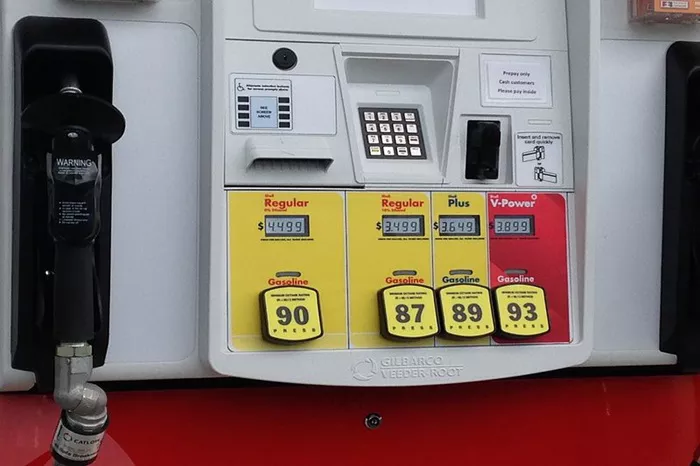Oxygenated gasoline is a type of fuel that includes additional oxygen-bearing compounds to enhance combustion efficiency and reduce emissions. This article explores what oxygenated gasoline is, its components, benefits, potential drawbacks, and its impact on the environment and engine performance.
Components of Oxygenated Gasoline
Ethanol and Methanol
Ethanol and methanol are the most common oxygenates used in gasoline. Ethanol, derived from corn and other biomass, is a renewable resource. Methanol, often produced from natural gas, is another widely used oxygenate. Both increase the oxygen content in gasoline, promoting more complete combustion.
MTBE and ETBE
Methyl Tertiary-Butyl Ether (MTBE) and Ethyl Tertiary-Butyl Ether (ETBE) are synthetic compounds used as oxygenates. MTBE has been widely used in the past but has faced scrutiny due to groundwater contamination concerns. ETBE, derived from ethanol and isobutylene, serves as an alternative with similar properties but fewer environmental risks.
Tertiary Butyl Alcohol (TBA)
Tertiary Butyl Alcohol (TBA) is another oxygenate used in gasoline. While less common than ethanol and MTBE, TBA serves a similar function in promoting better combustion and reducing emissions.
Benefits of Oxygenated Gasoline
Reduced Emissions
Oxygenated gasoline significantly reduces harmful emissions, including carbon monoxide (CO), volatile organic compounds (VOCs), and nitrogen oxides (NOx). These pollutants contribute to smog and air quality problems, making oxygenated gasoline an important tool for cleaner air.
Enhanced Combustion Efficiency
The additional oxygen in the fuel allows for more complete combustion, improving engine efficiency. This can lead to better fuel economy and more consistent engine performance, especially in older vehicles that may not burn fuel as efficiently as modern engines.
Compliance with Environmental Regulations
Many regions mandate the use of oxygenated gasoline to meet stringent air quality standards. The Clean Air Act in the United States, for example, requires the use of reformulated gasoline (RFG) in areas with severe air pollution, which often includes oxygenated fuel blends.
Potential Drawbacks of Oxygenated Gasoline
Phase Separation
One of the challenges with oxygenated gasoline, particularly ethanol blends, is phase separation. Ethanol can absorb water from the atmosphere, leading to a separation of water and fuel in the tank. This can cause engine performance issues and corrosion in the fuel system.
Lower Energy Content
Oxygenates like ethanol have lower energy content compared to pure gasoline. This means that a gallon of ethanol-blended fuel will provide slightly less energy, potentially reducing miles per gallon (MPG) and requiring more frequent refueling.
Material Compatibility
Some materials used in older vehicles and equipment may not be compatible with high levels of ethanol. Rubber seals, gaskets, and certain types of plastic can degrade over time when exposed to ethanol-blended fuels, leading to leaks and other maintenance issues.
Environmental Impact
Groundwater Contamination
While MTBE effectively reduces emissions, its use has been curtailed due to concerns about groundwater contamination. MTBE is highly soluble in water and can persist in the environment, making it a significant pollutant in areas where gasoline has leaked or spilled.
Biodegradability of Ethanol
Ethanol is biodegradable and less likely to contaminate water supplies compared to MTBE. However, the production of ethanol from crops like corn raises other environmental concerns, such as land use changes, water consumption, and the use of fertilizers and pesticides.
Carbon Footprint
The use of oxygenated gasoline can reduce the overall carbon footprint of fuel consumption by promoting more complete combustion and reducing emissions. However, the production and distribution of oxygenates like ethanol can offset some of these benefits due to the energy-intensive processes involved.
See also: Diesel Vs Gasoline Engine Oil: What Is The Difference?
Engine Performance
Improved Cold Start Performance
Oxygenated gasoline can improve cold start performance, especially in colder climates. The additional oxygen helps the fuel vaporize more easily, leading to more reliable ignition and smoother running engines during startup.
Potential for Increased Engine Wear
There is some debate over whether oxygenated gasoline can increase engine wear over time. The more complete combustion can lead to higher combustion temperatures, potentially causing more wear on engine components. However, modern engines are generally designed to handle these conditions without significant issues.
Economic Considerations
Production Costs
Producing oxygenated gasoline can be more expensive than conventional gasoline due to the additional processing steps and the cost of oxygenates. These costs can be passed on to consumers in the form of higher fuel prices.
Subsidies and Incentives
Many governments provide subsidies and incentives for the production and use of biofuels like ethanol. These policies aim to reduce dependence on fossil fuels, support agricultural industries, and promote cleaner air. However, they can also distort market dynamics and lead to higher overall costs for fuel.
Global Adoption and Use
North America
In North America, oxygenated gasoline is widely used, particularly in areas with strict air quality regulations. The Renewable Fuel Standard (RFS) in the United States mandates the use of renewable fuels, including ethanol, in transportation fuel.
Europe
Europe also uses oxygenated gasoline, with a focus on reducing greenhouse gas emissions and improving air quality. The European Union’s Renewable Energy Directive sets targets for the use of renewable energy sources, including biofuels.
Developing Countries
In developing countries, the adoption of oxygenated gasoline is less widespread but growing. These countries face unique challenges, such as limited infrastructure for biofuel production and distribution, but also have significant potential for reducing air pollution and improving public health.
Conclusion
Oxygenated gasoline is a critical component in the effort to reduce emissions and improve air quality. While it presents some challenges, such as phase separation and material compatibility, its benefits in terms of reduced emissions and improved combustion efficiency make it a valuable tool in the transition to cleaner energy. As technology and regulations evolve, the role of oxygenated gasoline will continue to adapt, contributing to a more sustainable and environmentally friendly future.
Related topics:

